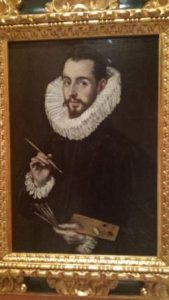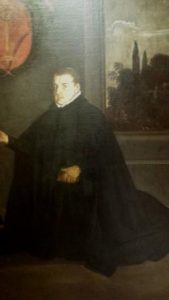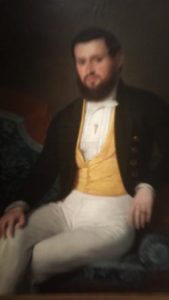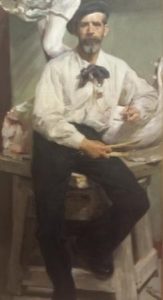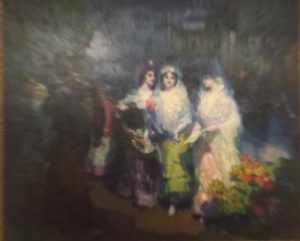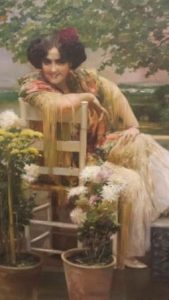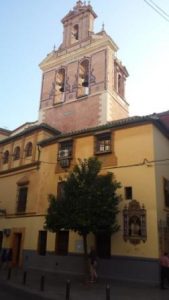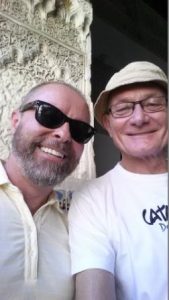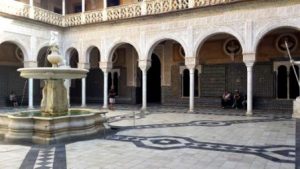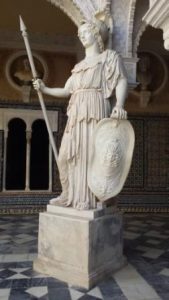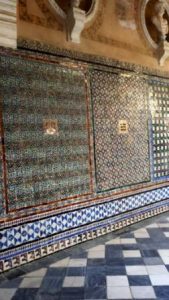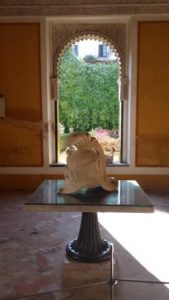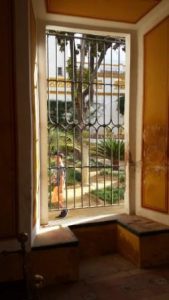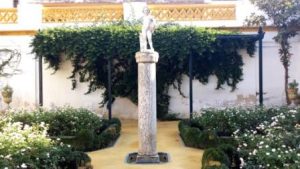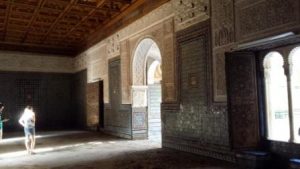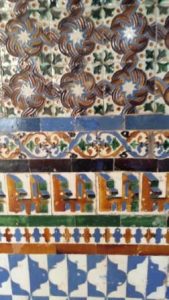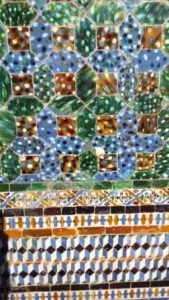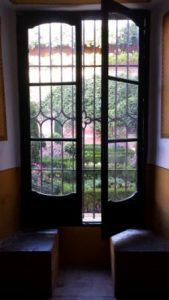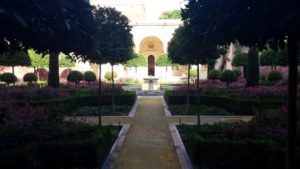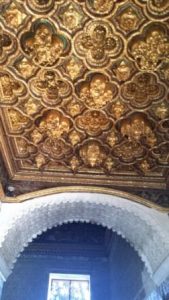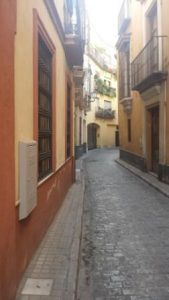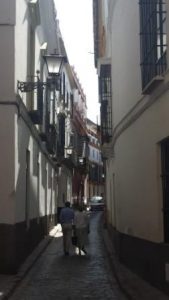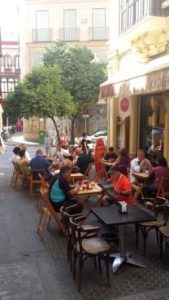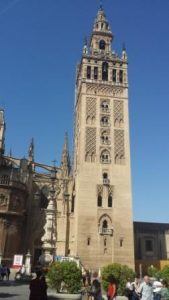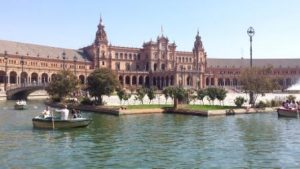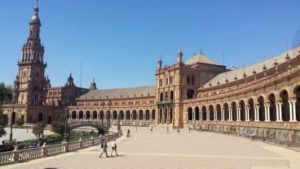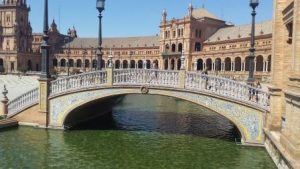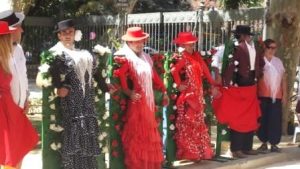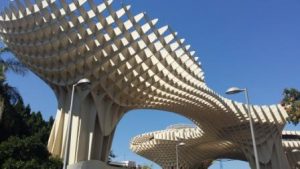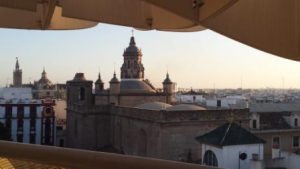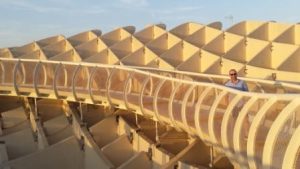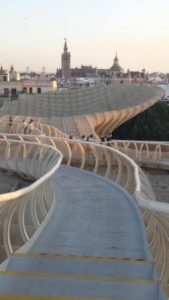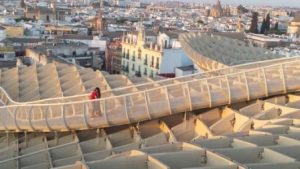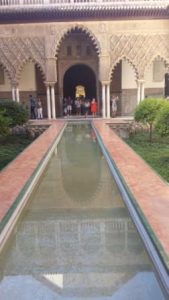
Monday morning in Seville and there are a few breakfast places open for Café con Leché and Tostadas Jamon. Every eatery we’ve been to has had super friendly waiters and waitresses. We’re on our way through the narrow city streets again, looking for the Alcázar Palace. My GPS woman knows exactly where it is, but not how to get in. In the end David suggests we do that very un-male thing and ask someone. Yes we are outside the garden walls, and if we just follow the wall around we will get to it. We do that and find a medium queue. I keep our place while David looks for water and somewhere to pee.
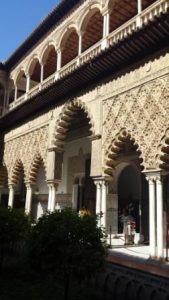
The Alcázar Palace, begun in 1364 is a mixture of Gothic and Mudejar. It was built on the site of a former Moorish palace and mosque and incorporates many of those features. Like most palaces, it’s been added on to and altered, but it is a beautiful and serene place. We spend time thoroughly exploring the place, doubling back to make sure we haven’t missed anything. A high walk-way gives us a fantastic view of the surrounding gardens.
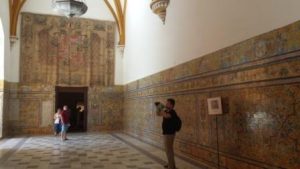
By the time we’ve seen everything available, it’s time for a late lunch and having identified a nearby street of restaurants yesterday, that’s where we go. Shade is essential as it’s a warm 30 degrees and in spite of asking for ‘blanco’ anchovies, none are to be had today. It’s siesta time again and I really do need to flake out, surfacing later to eat drink and hang about with David.
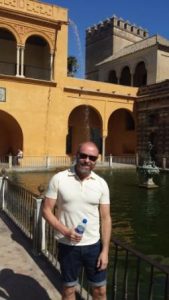
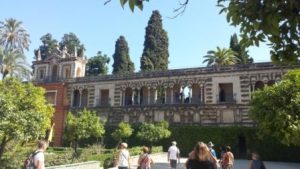
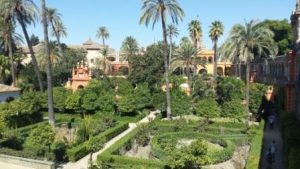

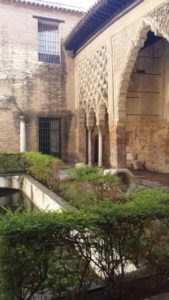
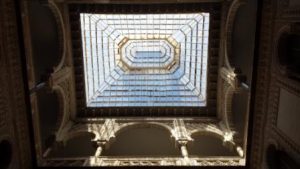
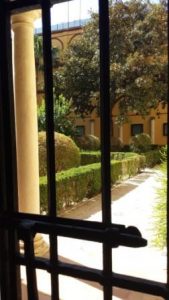
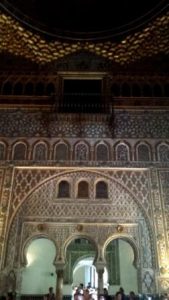
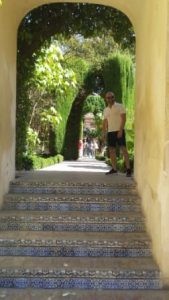
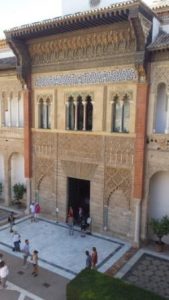
Nothing much happens in Seville on a Monday night, so it’s back to the Mr B&B for an early-ish night. Emelio and Manuel are still up and about, so there’s time to say goodbye. They will be gone to work early in the morning and I’m to just leave the keys on the dressing table.

Tuesday morning and I’ve got my eye on The Belle Arts Museum. It’s just down the road from my digs and I can return to collect luggage and shower before my Ryanair experience later in the day. David is up and about and says he’ll join me, so I have breakfast just around the corner from the museum.

David arrives and also needs breakfast; he says he’ll join me. For some reason, I’ve brought my passport, perhaps in the hope that there will be a discount for being officially old. Actually, my European passport gets me into the place for free. How good is that?
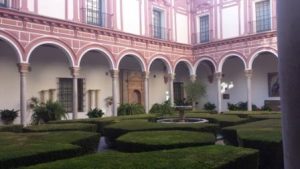
I must dash around Europe madly taking advantage of this while I can. I’m just starting off when David texts me in a panic. He’s got his dates wrong and has to immediately go and catch his flight to Bilbao. Just as well he realised in time.
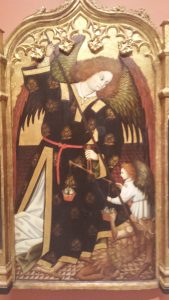
This building was once a monastery and has gathered together many paintings from religious institutions since 1836, when they were all shut down. Built in 1594, the building has fine ceilings and architectural features. I’m not a huge fan of ecclesiastical painting, but I am interested in how mediaeval and renaissance painters depict the biblical stories and characters according to their own cultural norms. So, for example Seville Madonnas all look Spanish with dark hair and olive skin. German painters portray the Holy Family as fair-skinned and blond. Painters had never been to the Middle-east, their sitters were local people they knew. It would just not be acceptable to portray the Holy Family as Jewish now would it?
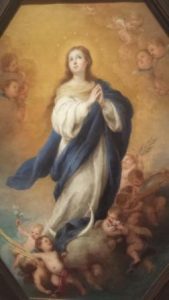
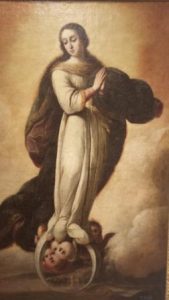
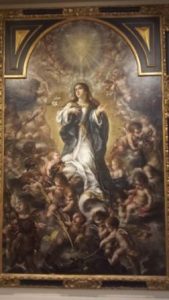
I’m drawn to a series of Madonnas ‘Inmaculada’. They are all surrounded by scores of cherubs, some of whom seem to looking for a way up Our Lady’s skirt – as if one of them can miraculously enter her womb and be born as the infant Jesus.
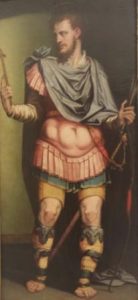
The portrait of Saint Sebastian catches my eye. Traditionally he’s depicted as beautiful and slim, but this portrait has him with tree-trunk legs and a thick waist.
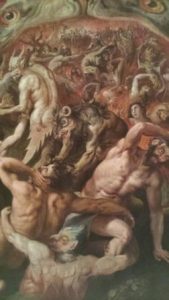
I’m also interested in the homoeroticism of the magnificent torsos and backs of those sinners being dragged towards hell mouth. Murillo is everywhere and paints large canvases. Individually, they don’t do much for me, but en masse in the large hall they impress. Today, his portrait of a young monk looking adoringly at the infant Jesus might raise a few eyebrows. Certainly the monk is a way to close to the child for comfort.
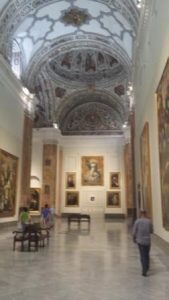
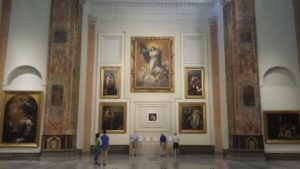
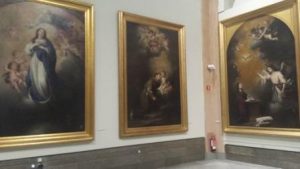
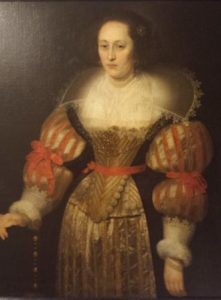
There are also more modern paintings. As a freebie and a place to spend a relaxing couple of hours, this is great value. David made it to Bilbao and I dozed upright in Ryanair for two and a half hours.
